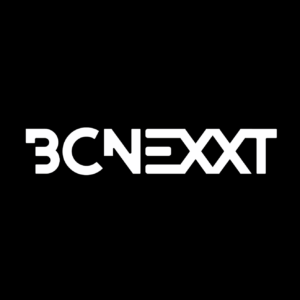
Craig Buckland
Technical Director
The subscription video on demand (SVOD) market experienced a huge surge in demand during the pandemic, as people under enforced lockdowns signed up for streaming services in their masses. However, as people return to their pre-pandemic routines, whilst simultaneously having to manage an increased cost of living, many are choosing to reduce the number of paid streaming subscriptions that they are signed up to. This is having a big impact on the global SVOD market. As a case and point, in the first half of 2022, steaming giant Netflix lost almost 300K subscribers globally, and according to data recently released by the Broadcasters Audience Research Board, in the UK, there was an overall decline in the number of households accessing SVOD services during the same time period. This upward trend in churn rates has led streaming platforms to consider adapting their offering to reduce or remove subscription fees by offering ad supported services.

Single woman watching online tv in the night sitting on a couch in the living room at home
The Rise of AVOD
Advertising video on demand (AVOD) differs from SVOD as revenue is generated from ad sales, rather than subscription fees. As consumers increasingly search for ways to reduce their outgoings, churn is becoming a growing concern for SVOD providers. Consumers are gaining more tolerance for advertising, especially if it means they can access their favourite content for free. As streaming services look to retain and attract subscribers by reducing or removing monthly fees and offering more choice in the level of service available, it seems likely that we will see an increase in AVOD services. Service providers may also choose to opt for a more blended approach involving limited ad delivery with a reduced subscription fee. This is something that Netflix have recently announced as a means to prevent churn and attract new subscribers.
According to research carried out by Rethink Technology Research, AVOD is projected to grow from 6.81 billion active users today to over 8.62 billion by 2027, with the corresponding advertising revenue projected to grow from $50.18 billion to $91.36 billion in the same period.
Better advertising targeting made possible through advanced audience analytics has undoubtedly improved user experience for AVOD audiences. This improved user experience, combined with a desire to reduce subscription fees has made the AVOD model much more attractive to both users and broadcasters alike.
Although offering an ad supported option may seem like the obvious solution to broadcasters who are looking to respond to churn and increase revenue, ad delivery is a complex process and can present some significant technical challenges if not managed correctly.
Effective Ad Management
Managing broadcast ad delivery and ad sales is a complex area, largely because of the different processes and systems involved, that all need to be integrated into the broadcast workflows. Advertisers naturally want maximum return on investment and that requires targeted advertising, so being able to provide advanced audience analytics is critical for any broadcaster wanting to maximise revenue from advertising sales.
Audience analytics needed to sell advertising spots includes planned audience numbers and audience demographics. Therefore, for an advertising management system to be effective, it needs to be integrated with audience research systems. In addition, ad management systems also need to interface with digital agencies that buy and sell advertising space such as Google Ad Manager and FreeWheel.
Broadcasters also need to be able to effectively manage the ad delivery process so that placement rules and requirements agreed with the advertiser are met, and ads are tracked to verify exactly what advert was shown, at what time, and under what circumstances.
It can be difficult to find an ad management platform or solution that meets both the broadcasters’ and advertisers’ requirements. The process is further complicated when dealing with multiple channels, and when broadcasting across different regions. The multi-layered systems involved in managing ads mean that lack of interoperability can and will cause significant problems.
The right tools can bring greater control
When it comes to managing advertising delivery and sales, providing the right tools are in place, bringing the process in-house can be hugely beneficial to broadcasters. By integrating ad sales with existing broadcast workflows such as the channel management process, broadcasters can benefit from improved efficiency, and greater control over the ad sales process.
Advanced advertising solutions should allow broadcasters to manage the entire ad sales process remotely without compromising on functionality. An effective ad sales system enables broadcasters to maintain high level proposals and sales contracts, optimise bookings, cater for single or multiple channels, and support the placement of spots whether through gross rating points (GRPs), or via individual spot booking.
Flexibility and Interoperability
In any fast-moving industry, it is important to be able to respond quickly to market changes, as well as to customer and user needs. The media and entertainment industry is no exception. Having the capabilities to scale up or down as business needs require is essential for longevity and success. High levels of flexibility are required at all stages of the broadcast process workflow, including ad delivery and management. Greater flexibility can be achieved from a modular channel management and ad sales system that allows the broadcaster to select the features and functions that are required by their operation.
In the age of cloud working and APIs where broadcasters select different vendors and tools for different workflow elements, it is critical that any ad management solution can integrate seamlessly with other systems within the broadcast workflow.
The future looks to be AVOD
Although the pandemic caused global ad revenue to dip in 2020, sales have since recovered and are predicted to continue to increase year on year. According to data published recently by Statista, global ad revenue grew to $772.41 billion in 2021 and is projected to reach a staggering $1,075.38 billion by 2027.
Ad management can be technically challenging, but with the right tools in place, the process can be managed effectively and efficiently. Combine this with the fact that advertising will always be a crucial marketing channel for brands, and it is clear that AVOD is a sustainable business model for the long term.









